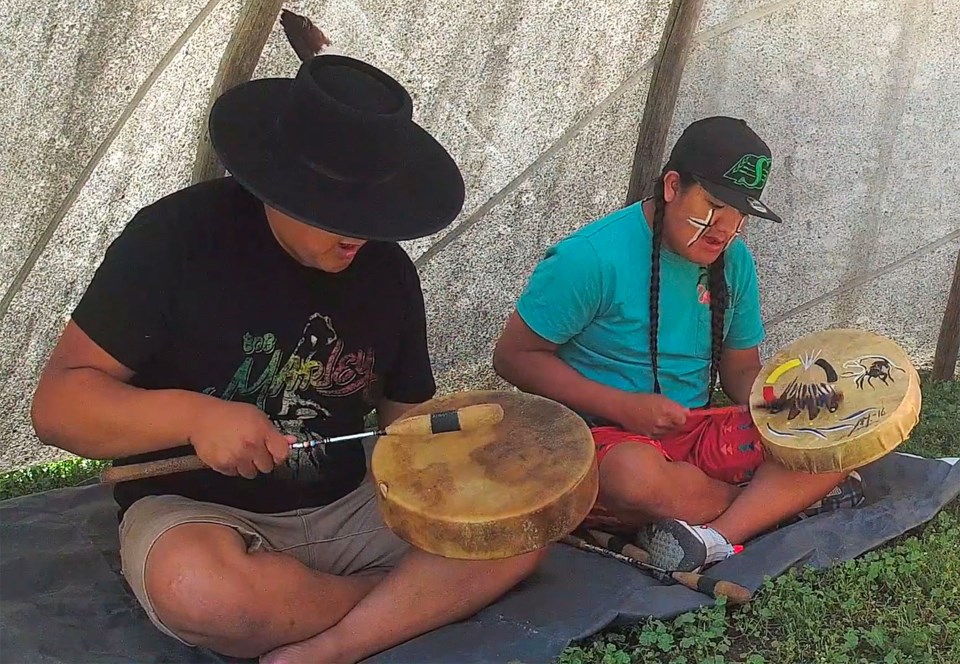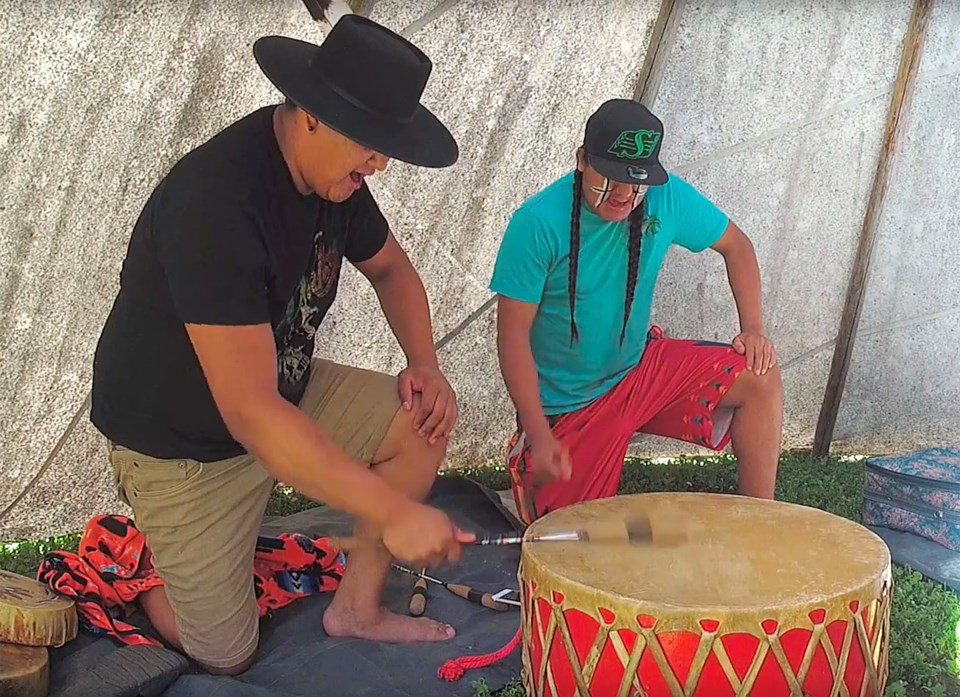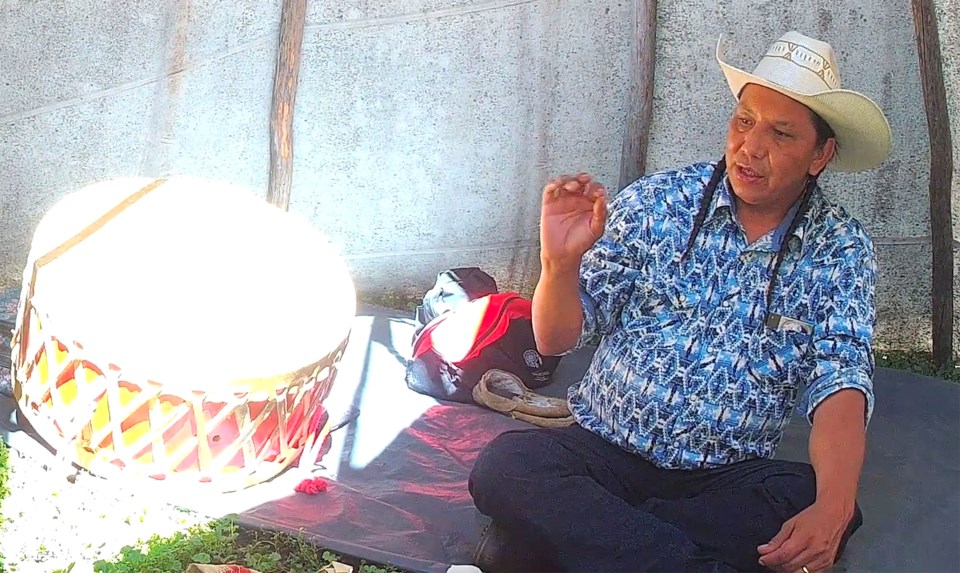As it turns out, YouTube fits the bill rather nicely.
The Saskatchewan Districts for Sports, Culture and Recreation partnered with the Gathering to create a series of educational videos surrounding powwows, round dances, regalia, drums and just about everything to do with First Nation events you’d see all over Saskatchewan.
The videos were produced with Plains Cree cultural advisor Harold Littletent and his Dancing Horse Dance Troupe, who anyone who has seen a powwow in or around Moose Jaw has undoubtedly seen perform.
The first of the videos features Littletent and sons Tiny and Dennis explaining the protocols of hand drums and the big drum, familiar objects at nearly every First Nations event.
Hand drums are traditionally used during the winter and are a regular feature at round dances all over the province. Like the big drum, they’re made from “the hide of a four-legged animal, it could be a deer, moose, elk or buffalo,” explained Littletent, and are often handed down over generations.
“We always respect what we have, keep it safe and store it for a long time,” Littletent says to begin the Hand and Powwow Drums and Teachings video. “Most of these handdrums that these boys have now are way older than them, they must be 30 years old, 40 years old. But we’ve passed it on to them and they’re looking after them.”
Round dances always move in a clockwise direction, with the singers in the middle of the procession.
“The songs they sing, it means ‘we all get together’ in our language,” Littletent explains. “The boys were gifted to sing and dance, and it’s beautiful when you listen to their songs, it really makes you want to dance.”
According to the University of Alberta, ‘A round dance is a ceremony that is intended to bring people together, to acknowledge, honour and to celebrate. Held in winter, round dances are times for healing and remembrance for the community as a whole.’
 Dennis and Tiny Littletent perform a song on their hand drums.
Dennis and Tiny Littletent perform a song on their hand drums.To watch Dennis and Tiny Littletent perform a round dance song, click here.
As part of the video, Littletent touched on some of the culture behind the drums and traditional First Nations outlook in general.
“Animals tell us things, and even when we use these animals for our hides, we always tell the children, ‘don’t feel sorry’ because the creator sent these animals for a purpose, they’re giving us life,” Littletent said. “They’re sacrificing their life for us, to feed us and help us.”
The larger powwow drums are what one would see at the popular First Nations outdoor events, and carry a wide variety of meanings through their songs and performances.
“There are so many different ceremonies it’s a part of,” Littletent said. “You can use it for a rain dance, you can use it for a sun dance, different kind of ceremonies. The boys have respect for the drum, they know their language, they don’t do drugs or drink alcohol. You have to be clear and have no problems and be serious.
“And when they sing, they bring that power… When that drum hits, people want to dance.”
 Dennis and Tiny Littletent perform a song on the big drum.
Dennis and Tiny Littletent perform a song on the big drum.To listen to a powwow drum performance by the Littletents, click here.
Littletent also spoke towards the First Nations tipi, from one of which the video is presented.
“People say it’s a ceremonial tipi, but this was our home, we lived here summer and winter,” he said. “We’d drag our tipi poles, and once we left our camp it was like nothing was ever there. You’d have a hole in the ground (with ashes) and that would be it, that’s how clean we were.”
Traditionally, rocks would be placed around the tipi and used to heat the tent to a comfortable temperature on cold winter nights. Those rock circles can still be found — including one on a farm near Watrous, where a set of tipi rings have remained untouched by a farmer and his family for what Littletent believed was centuries.
“He didn’t want to touch it, he wanted to respect this history,” Littletent said. “I gave him a blanket and an eagle feather because he respected it and the history, and his dad and his grandfather, going back 300 years. So we honoured that farmer for protecting that land, and we hope he’s living a good life.”
To watch the full video — and others covering First Nations and powwow culture, click here.




